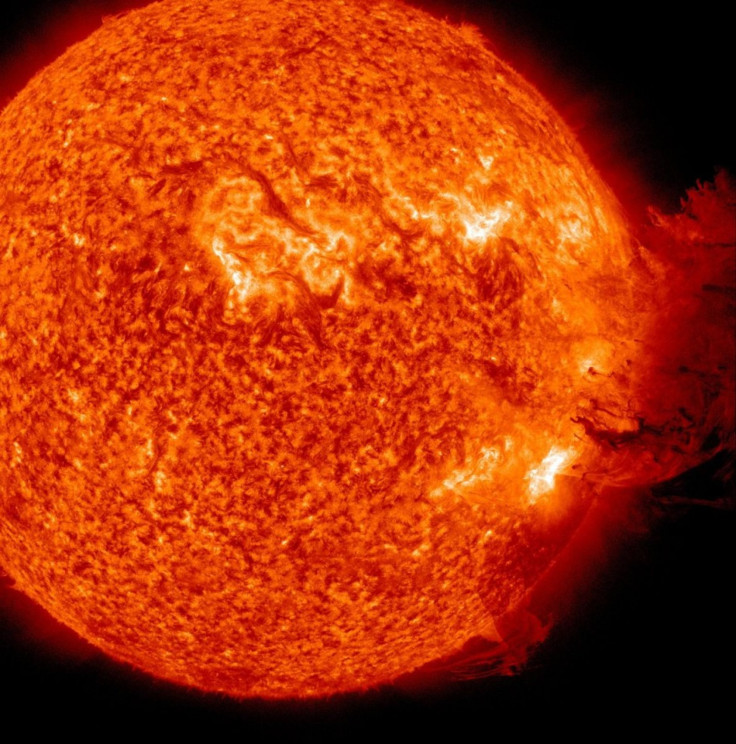Moon Takes a Beating from Solar Wind
Coronal Mass Ejections Blowing Away Moon's Surface

As our sun churns out massive amounts of energy, it sometimes belts out enough solar wind to literally sandblast the surface of the Moon. NASA scientists have used a model of the effects of coronal mass ejections -a gargantuan type of sun storm- to determine that such events can blow the equivalent of 10 dump truck loads of dust right off the Moon's surface and into space. NASA's Dynamic Response of the Environment At the Moon (DREAM) team performed the simulations.
"We found that when this massive cloud of plasma strikes the Moon, it acts like a sandblaster and easily removes volatile material from the surface," William Farrell, DREAM team lead at NASA Goddard, said in a statement.
The Moon has en extremely thin atmosphere and no magnetic field to protect if from the sun's constant fury. So, when the sun occasionally emits one of its coronal mass ejections, the Earth is protected and the Moon feels it very directly. NASA calls the process sputtering and it refers to surface particles being shot out into space because of a collision with plasma ions from the sun. The Moon is constantly bombarded with the sun's energy, but it seems the particles emitted during a CME are more powerfully charged and comparatively heavy than the usual hydrogen protons in the everyday solar wind.
The moon is not the only heavenly body affected by the dense CME driver gas. Space scientists have long been aware that these solar storms dramatically affect the Earth's magnetic field and are responsible for intense aurora (Northern and Southern Lights).
While certain areas of the Martian surface are magnetized, Mars does not have a magnetic field that surrounds the entire planet. Therefore, CME gases have a direct path to sputter and erode that planet's upper atmosphere. In late 2013, NASA will launch the Mars Atmosphere and Volatile Evolution (MAVEN) mission that will orbit the Red Planet to investigate exactly how solar activity, including CMEs, removes the atmosphere. On exposed small bodies like asteroids, the dense, fast-streaming CME gas should create a sputtered-enhanced exosphere about the object, similar to that expected at the Moon.
© Copyright IBTimes 2024. All rights reserved.











